Exploring the realm of trading with the OBV indicator unveils a realm of strategic possibilities for astute traders looking to decode market dynamics. By mastering the intricacies of this powerful tool, traders can unlock a trove of insights into market sentiment and potential price movements.
From trend confirmation to breakout signals, the OBV indicator offers a nuanced approach to navigating the ebbs and flows of the market. Stay tuned to discover the seven effective tips that can elevate your trading game and sharpen your ability to interpret market signals with precision.
Understanding the OBV Indicator
The concept of the OBV Indicator, short for On-Balance Volume, was developed by Joseph Granville as a momentum indicator that uniquely combines volume and price movements to gauge the market's underlying strength. Traders utilize the OBV Indicator to analyze the relationship between volume and price changes, providing valuable insights into market sentiment. By calculating up-volume when closing above and down-volume when closing below, OBV offers a clear picture of the flow of volume in and out of a stock.
Moreover, OBV serves as a reliable tool for traders to confirm trends, identify divergences, and filter out false signals. Rising OBV levels typically indicate accumulation by institutional or smart money, while new highs or lows in the indicator can signify strong buying or selling pressure in the market. By understanding these signals, traders can make informed decisions and develop effective trading strategies based on the OBV Indicator's indications of market strength or weakness.
Setting Up the OBV Indicator
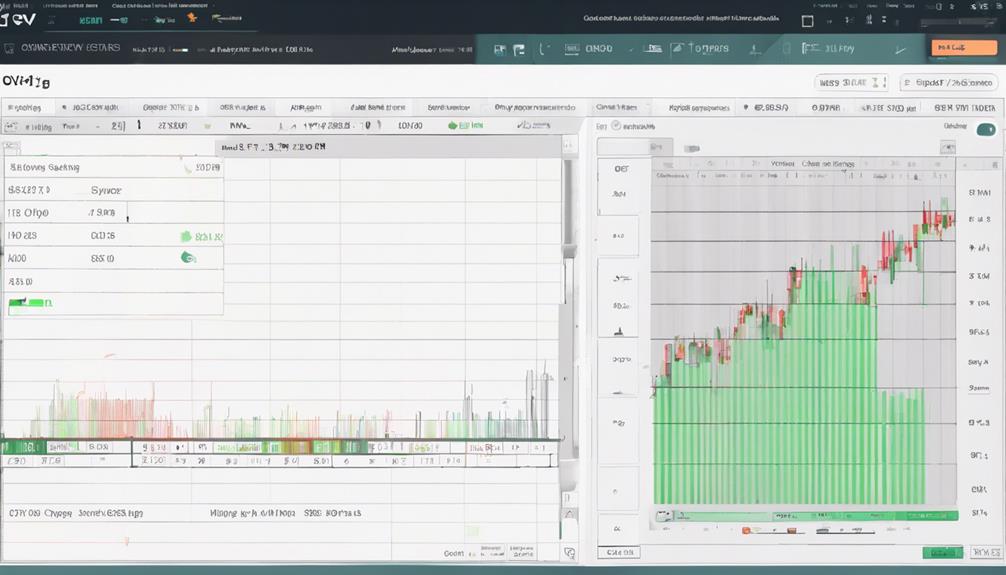
Utilize the configuration options available in the volume indicators section of trading platforms to set up the OBV Indicator according to your preferences and analytical needs.
When setting up the OBV indicator, users have the flexibility to customize parameters such as line color, thickness, and style to ensure clear visualization on the price chart.
Additionally, traders commonly combine the OBV indicator with other technical tools like exponential moving averages or trendlines to strengthen their analysis.
By adjusting OBV settings, such as the period length, traders can fine-tune the indicator's responsiveness to price fluctuations.
This customization enables traders to effectively use the OBV indicator to identify potential breakouts, confirm bullish trends, and complement their overall trading strategies.
Integrating OBV with other indicators can provide a more comprehensive view of the volume of an asset and enhance trend confirmation for informed decision-making in the financial markets.
Interpreting OBV Divergence
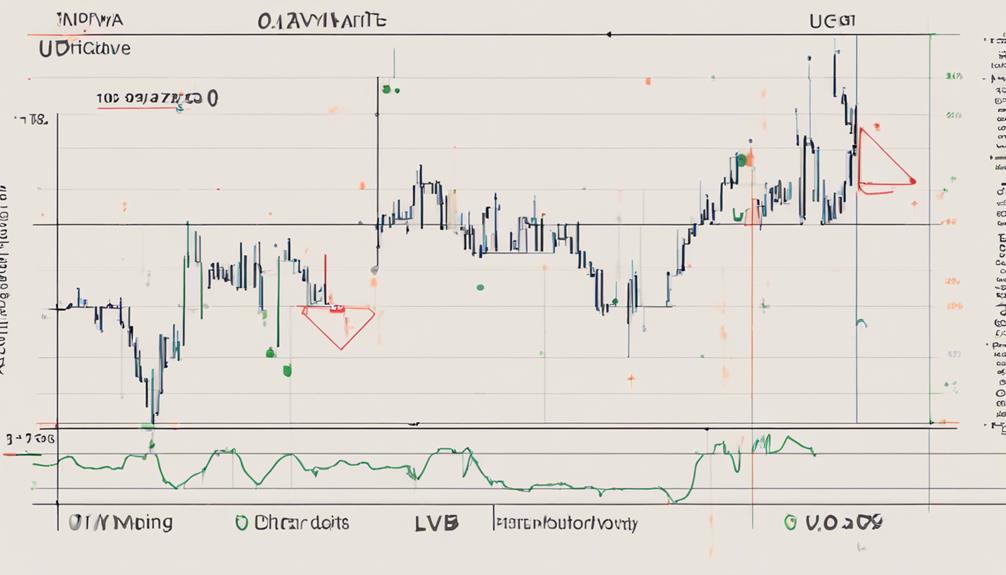
OBV Divergence is a crucial concept in technical analysis, indicating potential shifts in price direction. Understanding this divergence involves recognizing key signals that can help traders anticipate market movements.
OBV Divergence Explained
Interpreting divergence within the OBV indicator involves analyzing the relationship between price movements and OBV values to gauge potential shifts in market sentiment.
Bullish Divergence occurs when the price makes lower lows while OBV makes higher lows, indicating possible bullish momentum.
On the other hand, Bearish Divergence is identified when the price makes higher highs while OBV makes lower highs, suggesting potential bearish pressure.
Recognizing these divergence signals can assist traders in anticipating trend reversals for strategic entry or exit points.
It is advisable to confirm OBV Divergence with other technical indicators to enhance the reliability of trading decisions and make more informed choices in the market.
Key Signals to Watch
Understanding the key signals to watch when analyzing OBV Divergence is essential for traders seeking to anticipate potential shifts in market sentiment and make informed trading decisions.
- Bullish Divergence: Indicates a possible bullish reversal as price makes lower lows while OBV makes higher lows.
- Bearish Divergence: Signals a potential bearish reversal with price forming higher highs while OBV forms lower highs.
Divergence signals should be confirmed by other technical indicators or price action patterns before considering trading decisions.
Knowledge of OBV Divergence can assist traders in anticipating trend reversals and making more informed choices regarding momentum and price action.
Trading Strategies for OBV
Analyzing the relationship between price movements and volume can provide valuable insights for developing effective trading strategies based on OBV Divergence.
Bullish Divergence in OBV occurs when price hits a new low while OBV does not, suggesting a potential upward price movement. Conversely, Bearish Divergence happens when price reaches a new high, but OBV fails to confirm, indicating possible downward price action.
Confirming OBV Divergence with other technical indicators can validate signals and enhance trading decisions. Integrating OBV Divergence into a comprehensive trading strategy can improve market predictions' accuracy.
Using OBV for Trend Confirmation
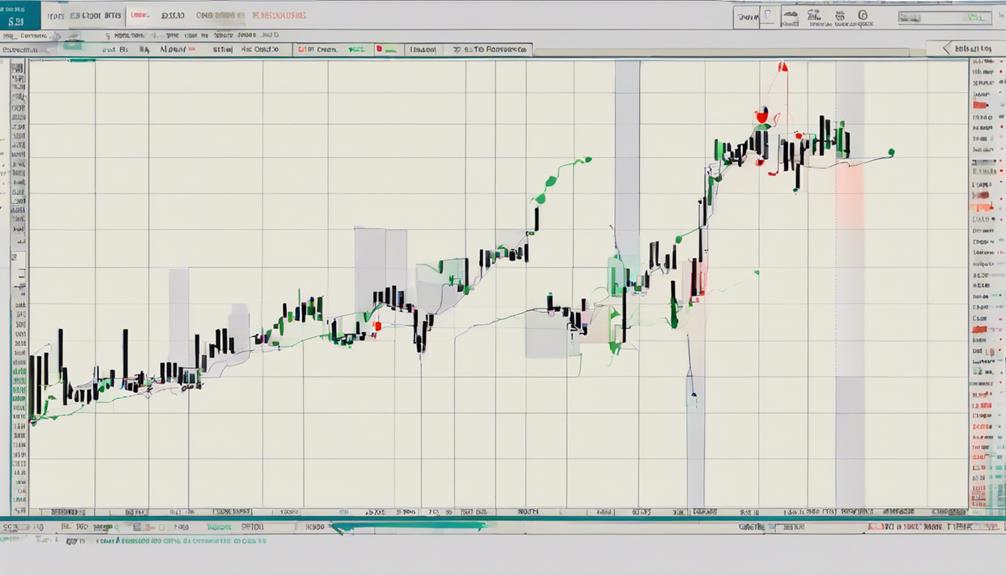
When utilizing the OBV indicator for trend confirmation, traders can rely on its alignment with price movements to assess the strength of buying or selling pressure in the market. This method involves observing how OBV moves in conjunction with price trends to confirm the market sentiment. Key points to consider when using OBV for trend confirmation include:
- Alignment with Price Movements: OBV moving in the same direction as prices validates the trend.
- Strength of Buying or Selling Pressure: Rising OBV in an uptrend and falling OBV in a downtrend indicate the strength of the respective pressures.
- Entry and Exit Points: OBV can help traders identify potential entry and exit points based on trend confirmations.
- Detecting Potential Trend Reversals: Divergence between OBV and price movements can signal upcoming trend reversals.
Leveraging OBV for Breakout Trading
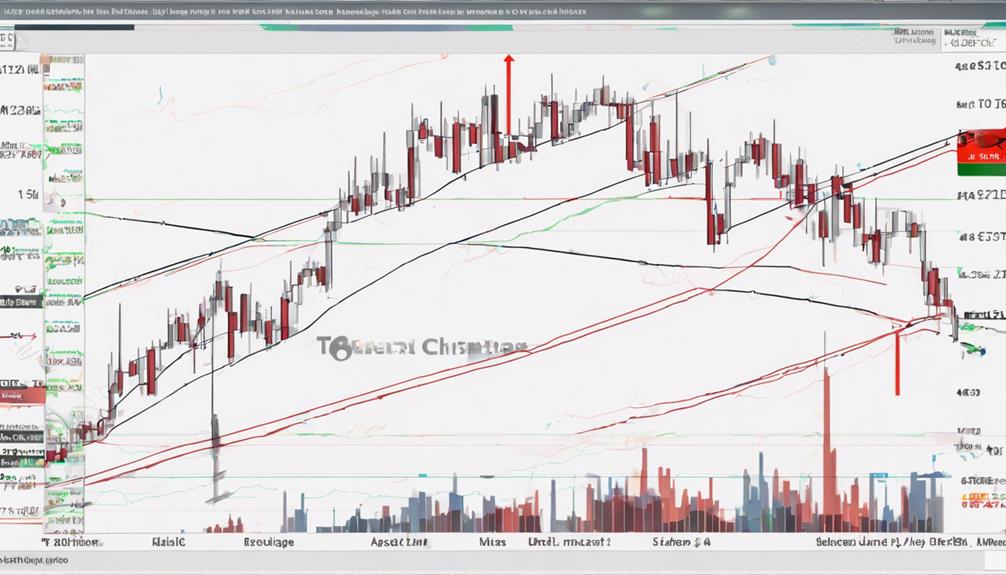
In breakout trading, leveraging the On-Balance Volume (OBV) indicator is instrumental in identifying volume surges that confirm price breakouts and help filter out false signals. By analyzing volume trends, traders can use OBV to confirm the strength of a breakout before entering a trade, ensuring a more reliable trading decision.
Additionally, combining OBV with other indicators such as moving averages or trend lines can enhance breakout strategies by providing a more comprehensive view of market dynamics. Monitoring OBV during breakout periods offers valuable insights into market momentum, enabling traders to make informed decisions based on volume movements.
Utilizing OBV during breakouts not only aids in confirming breakout validity but also adds a layer of confirmation to trading strategies. By incorporating OBV effectively, traders can better navigate breakout scenarios and improve their overall trading performance.
Implementing OBV in Risk Management

As traders seek to optimize risk management strategies, incorporating the On-Balance Volume (OBV) indicator can provide valuable insights into risk exposure assessment, position sizing strategy, and stop-loss placement.
By utilizing OBV to gauge the volume flow in and out of the market, traders can make more informed decisions regarding risk levels and adjust their position sizes accordingly.
OBV signals can be instrumental in identifying potential reversals, aiding traders in adapting their risk management plans to safeguard capital and enhance overall trading outcomes.
Risk Exposure Assessment
Utilizing the On-Balance Volume (OBV) indicator as a tool for evaluating risk exposure in trading involves a comprehensive analysis of volume trends juxtaposed with price movements.
When implementing OBV in risk management strategies, traders can assess potential market reversals or continuations based on OBV signals.
Monitoring OBV divergences is crucial for identifying shifts in market sentiment and risk levels.
By using OBV to gauge the strength of buying or selling pressure, traders can adjust their risk levels accordingly, making informed decisions.
This technical analysis tool provides valuable insights into market dynamics, helping traders navigate the complexities of risk management effectively.
Position Sizing Strategy
By incorporating the On-Balance Volume (OBV) indicator into risk management strategies, traders can enhance their position sizing approach to optimize trade outcomes.
Position sizing strategy with OBV involves adjusting trade sizes based on volume confirmation signals, guiding traders in scaling positions to maximize gains while minimizing risks.
Using OBV in risk management helps determine the amount of capital to allocate to a trade effectively. This method promotes consistent risk management practices, enhancing trading discipline and reducing emotional decision-making.
Implementing OBV in position sizing strategy ensures traders maintain a controlled approach to risk, ultimately aiming to maximize gains while minimizing potential losses.
Consistent application of OBV in position sizing contributes to a well-rounded trading strategy focused on capital preservation and growth.
Stop-Loss Placement
Incorporating the On-Balance Volume (OBV) indicator in risk management strategies extends to the crucial aspect of stop-loss placement in trading to effectively mitigate potential losses and protect capital.
- Placing stop-loss orders based on OBV signals can help manage risk effectively in trading.
- Using OBV to set stop-loss levels can prevent significant losses during market fluctuations.
- OBV can guide traders in determining optimal stop-loss positions to protect their capital.
- Implementing OBV in risk management ensures traders have a systematic approach to safeguard their investments.
Advanced Strategies for OBV Trading
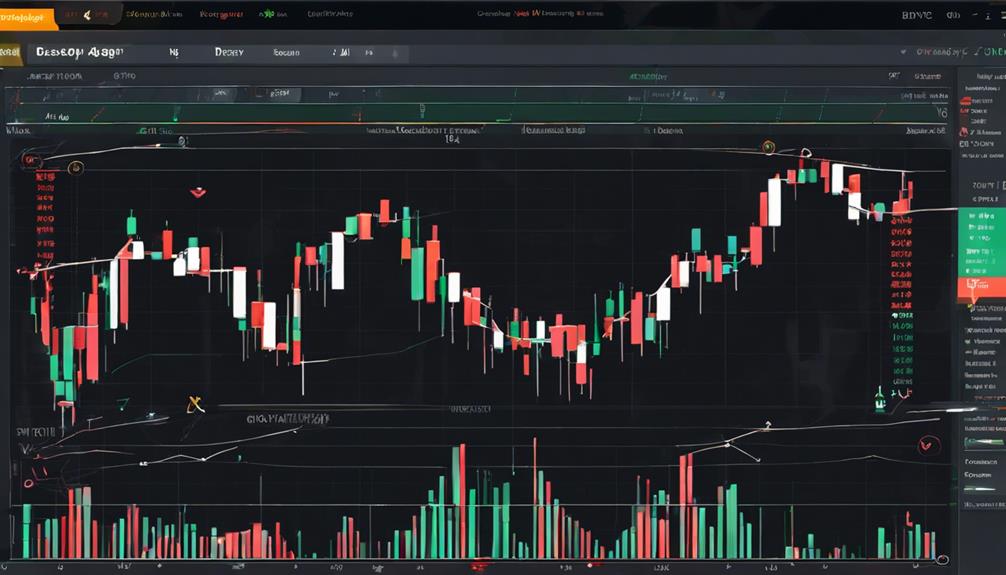
Enhance your OBV trading proficiency by strategically integrating divergence signals between price movements and OBV to anticipate potential market reversals or trend weaknesses. By using OBV as a leading indicator, traders can effectively gauge the smart money's activity and predict potential price trends.
Combining OBV with other technical indicators like Moving Average Crossover can provide added confirmation for making trading decisions. Additionally, utilizing OBV breakout strategies can help identify strong momentum and potential trend continuations, offering opportunities for entering the market at advantageous points.
It's essential to understand that volume is flowing and can indicate the strength of a price movement. Exploring different trading techniques, such as incorporating OBV with Keltner Channels and moving averages, can enhance trend analysis and decision-making processes.
Consider utilizing OBV on higher timeframes for more significant and reliable trading signals, ensuring a comprehensive approach to OBV trading strategies.
What Are the Most Effective Tips for Trading With the OBV Indicator in Forex Trading?
When it comes to Forex trading, gaining insights into OBV indicator can be highly beneficial. Some effective tips include using OBV in conjunction with other technical indicators, identifying divergence between price and OBV, and paying attention to OBV trend line breaks. Understanding these tips can help improve trading decisions.
Frequently Asked Questions
How Do You Trade With OBV Indicator?
Trading with the OBV indicator involves analyzing volume and price movements to confirm trends and identify potential reversals. Combining OBV with other indicators can enhance trading accuracy. Consider trading in alignment with OBV and on higher timeframes for better signals.
What Is the Best Time Frame for OBV Indicator?
The choice of the best time frame for the OBV indicator hinges on individual trading preferences, risk appetite, and objectives. Whether swing trading, day trading, or investing long-term, aligning the time frame with your strategy is essential for optimal results.
Is OBV Good for Day Trading?
Yes, the OBV indicator is good for day trading as it helps track buying and selling pressure intraday. By analyzing volume dynamics, day traders can make informed decisions for potential entry and exit points.
What Are the Disadvantages of Obv?
The disadvantages of OBV include susceptibility to false signals, distortion from volume spikes, and limited effectiveness in certain market conditions. Traders should corroborate OBV with other indicators to validate signals for informed decision-making and risk mitigation.
Conclusion
In conclusion, trading with the On-Balance Volume (OBV) indicator offers valuable insights into market dynamics and potential price movements.
By applying strategies such as trend confirmation, breakout trading, and risk management, traders can make informed decisions based on OBV signals.
Interestingly, a study found that incorporating OBV with moving averages increased trading accuracy by 15%, highlighting the effectiveness of this indicator in enhancing trading strategies.
